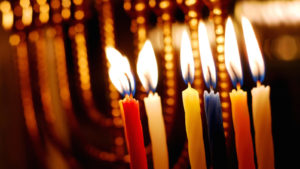8 New Things I Learned About Hanukkah
Every year I learn something new about the Jewish holidays, which are all rich in history and dramatic storytelling of survival that influence our treasured customs, traditions, rituals, and, of course, our favorite foods because c’mon we love to eat. Hanukkah, which falls in November or December when the dark days of winter are approaching, happens to be one of the most widely celebrated times in the Jewish calendar. It’s popularity is not because the Festival of Lights is the most sacred holiday but because religious and nonreligious Jews alike embrace the traditions of lighting the menorah, eating latkes, spinning the dreidel, exchanging gifts, and devouring those gold foiled candies known as chocolate gelt, a Yiddish word for “money.” But Hanukkah, which is a Hebrew word for “dedication,†means so much more than enjoying fun and games and splurging on scrumptious sufganiyot or jelly-filled doughnuts.
As early as preschool, we are taught about the Hanukkah miracles of the Maccabees and the oil lasting for eight days, and as we grow up and mature and become parents ourselves, we continue to find deeper meaning of the sacrifices that our ancestors made thousands of years ago and how these lessons are relevant to our modern lives. By celebrating these holidays, sharing the joy with our children, and growing spiritually from each other, we continue to learn, show our pride, and most importantly keep Judaism alive.
So, following are EIGHT fascinating facts that I discovered or re-learned in a new way about Hanukkah this year. Feel free to share your new insights of Hanukkah, too! Continue reading

